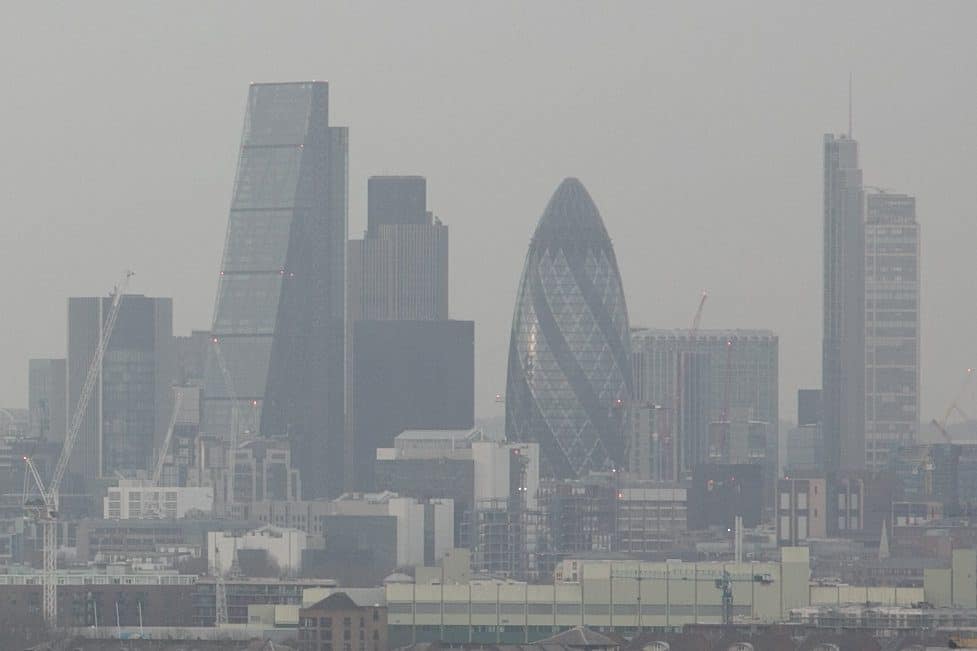
Credit;SWNS
Even short-term exposure to air pollution has been linked to a spike in mental illnesses in youngsters a day or two later.
Smoke and fumes from traffic and industry contain toxic particles that can get into the brain and can make children feel suicidal, according to new research.
Co lead author Dr Cole Brokamp said: “This study is the first to show an association between daily outdoor air pollution levels and increased symptoms of psychiatric disorders, like anxiety and suicidality, in children.”
Those living in deprived areas were most prone – especially to the more serious conditions.
Dr Brokamp, an epidemiologist at Cincinnati Children’s Hospital, Ohio, said: “More research is needed to confirm these findings.
“But it could lead to new prevention strategies for children experiencing symptoms related to a psychiatric disorder.”
His team trawled the emergency department’s patient records and identified an increasing number of psychiatric issues.
The study found that short-term exposure to ambient air pollution was associated with exacerbations of psychiatric disorders in children one to two days later, as marked by increased utilisation of the Cincinnati Children’s emergency department for psychiatric issues.
Dr Brokamp said: “The fact children living in high poverty neighbourhoods experienced greater health effects of air pollution could mean pollutant and neighbourhood stressors can have synergistic effects on psychiatric symptom severity and frequency.”
The analysis published in Environmental Health Perspectives follows two recent studies at the same hospital that highlighted the relationship.
Co lead author Dr Patrick Ryan said: “Collectively, these studies contribute to the growing body of evidence that exposure to air pollution during early life and childhood may contribute to depression, anxiety, and other mental health problems in adolescence.
“More research is needed to replicate these findings and uncover underlying mechanisms for these associations.”
They may shed fresh light on the alarming rise in depression and suicide rates among young people.
Earlier this year a US study found depression among 14 to 17 year olds had increased by more than 60 percent in less than a decade.
The increases were nearly as steep among those aged 12 and 13 (47%) and 18 to 21 (46%).
In 2017 more than one in eight Americans aged 12 to 25 experienced a major depressive episode.
Similar trends have been identified in the UK. NHS figures show one in eight people under the age of 19 in England had a mental disorder in 2017, rising to one in six for 17 to 19 year olds.
The number of teenage suicides in England and Wales have increased by 67 per cent in eight years.
In 2017 alone 187 under 19s took their own lives, compared with 162 the year before – a rise of 15 per cent. At the start of the decade, the figure stood at 112.
The phenomenon has been blamed on the growth of smartphones, social media, texting and gaming.
Air pollution has previously been linked to depression and bipolar disorder in adults.
But in May, a Cincinatti Children’s team linked it to anxiety in 12 year olds for the first time.
A study found those living near a busy road were more susceptible because of the toxic effect of traffic pollution on the developing brain.
Scans showed they had higher levels of myoinositol – a naturally occurring sugar that is a sign of anxiety. This was compared to those from quieter, less polluted streets.
Fine particles and other exhaust pollutants are known to cause inflammation in organs – especially the developing brain, said the researchers.
It was the first study to use neuroimaging to link traffic pollution with metabolic disturbances in grey matter and general anxiety symptoms in otherwise healthy children.
That same month Dr Ryan and colleagues found a significant link between high exposure to vehicle exhaust fumes in childhood and self reported depression and anxiety by the age of 12.
Similar findings have been reported in adults, but research showing clear connections in children has been limited.
More than 80 percent of the world’s urban population is breathing unsafe levels of air pollution.
Described as an invisible killer, it causes an estimated seven million premature deaths a year worldwide, according to the World Health Organisation.
Pollution is also fuelling increases in degenerative diseases such as Alzheimer’s and other forms of dementia, health experts fear.
Previous studies have found air pollution has a negative impact on students’ cognitive abilities.
Many pollutants are thought to directly affect brain chemistry in a variety of ways. For instance, particulate matter from traffic and industry can carry toxins through small passageways and directly enter the brain.
Some of these pollutants can have a psychological impact, increasing the risk of depression.